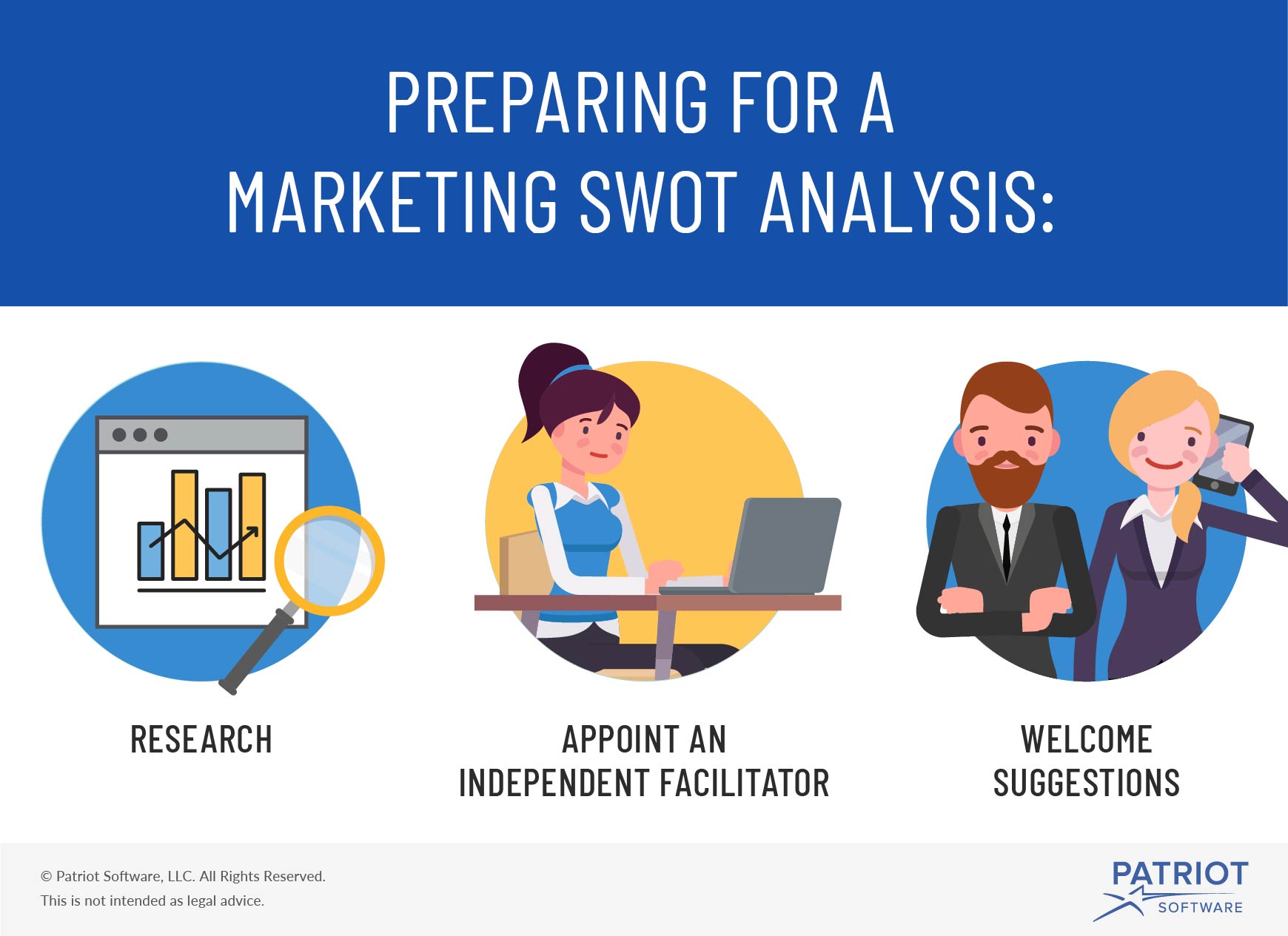SWOT, an acronym for strengths, weaknesses, opportunities, and threats, is a strategic organizational tool that helps businesses make long-term plans and important strategic decisions. Typically, you use a small business SWOT analysis to obtain a comprehensive look at the factors that affect your business’s viability.
It doesn’t take a rocket scientist to conclude how every business has a finite supply of resources, including labor, finances, and supplies. Every company looks to allocate resources as efficiently as possible while mitigating any factors that pose a threat to achieving its goals. That is where SWOT analysis comes in.
The purpose of doing a SWOT analysis is to create a business strategy that enables the company to cash in on its strengths. And, it helps build a positive reputation while cautiously improving weaknesses that can damage growth.
As we all know, marketing is an essential part of any business. You need to be able to put your marketing goals in the service of your business goals.
The good news is that you do not have to perform a separate SWOT analysis (even though you can if you want) to use it for developing a marketing strategy. The goal is to be aware of your position in the market, grow your business, and avoid potential threats.
Preparing for a marketing SWOT analysis
SWOT is designed to be a quick, comprehensive, and helpful guide to determine the marketing efforts of a company. You want to be able to identify potential opportunities early on and work on promoting your strengths to your target audience.
Here are some tips that might help you conduct a SWOT analysis.
Research
The market is the best indicator of your company’s standing. To maximize a SWOT analysis’ effectiveness, conduct a market analysis. Recent developments, technological breakthroughs, and competitor practices all play a part in determining your business’s strengths, weaknesses, opportunities, and threats.
Appoint an independent facilitator
Although you can do the analysis yourself, having a fresh set of eyes overseeing the procedure can be beneficial.
Not only is an independent facilitator able to distinguish feelings from facts, but they can also analyze without being subconsciously biased toward your business.
Welcome suggestions
To extract maximum efficiency of a SWOT analysis, entertain different perspectives. People from varying levels of authority can point out flaws in your marketing strategy. And, they can provide you with a more thorough analysis.

Conducting a marketing SWOT analysis
Here are some tips and guidelines you can use to conduct your marketing SWOT analysis.
Strengths – What your company is doing right
Simply put, your marketing strengths are characteristics that make your organization attractive to your target audience. Place your products and services against existing competition to find your comparative advantage.
From a marketing perspective, the positive attributes that elevate you in the marketplace—whether tangible or intangible—fall in this list. Certain attributes distinguish your business from others, known as unique selling proposition (USP).
Innovative product, market reputation, or even the location of your business can be your marketing strengths. The point of identifying strengths is to feed into it. Which one of your strengths strikes a chord with your prospects? Identify what works and weave the same philosophy into future marketing efforts.
You can use strengths:
- To increase click-through rate (CTR) in paid advertising
- To increase conversions on your website
- In your blog content to better lead your customers through your sales funnel
- In any marketing method
For instance, independent rating agencies or review forums are credible and trustworthy sources to gauge customer trust. If your business has sparkling customer reviews that repeatedly say how your customer service is superb, it is a strength. Especially if your competitors can’t boast of the same.
Whenever you identify that one of your strengths solves a particular problem, don’t be afraid to double down on that as a part of your promotional efforts.
Weaknesses – What needs improvement
Anything that prevents you from reaching your marketing goal can be a weakness. A firm evaluation of your existing marketing strategy can prove fruitful in realizing where you went wrong with your branding efforts.
It is important to note that weaknesses are damaging factors that are under your control. And, you must address the weaknesses. For example, a marketing strategy that fails to provide a clear USP for the buyer can be a weakness.
This category is critical in plugging potential holes in your business.
For instance, say a business wants to increase brand awareness through blogger outreach. However, they lack an expert and skilled labor force. The business will likely face difficulties positioning or branding itself as a market leader. The company might look to hire an in-house marketer to overcome the weakness. Or, seek outsource work to a digital marketing agency.
Opportunities – Keeping an eye out
Opportunities can be any factor that interests your organization and presents a possibility for the business to prosper. Possible opportunities arise when competitors falter, new markets emerge, or a business capitalizes on market trends.
External factors are extraneous variables that are beyond your control and affect your company’s marketing strategy. It requires decision makers to be vigilant and ready to grasp any potential opportunity to increase brand exposure.
There are plenty of examples out there how small businesses capitalize on social trends to expand the exposure of their brand. For instance, take a look at the royal wedding when Prince Harry tied the knot with Meghan Markle. Many small businesses capitalized by creating customized products and marketing them across different mediums.
Festive seasons, holidays, or emerging markets have provided small businesses with ample opportunities to increase brand awareness and visibility (e.g., e-commerce).
However, opportunities do not emerge every day in highly saturated marketplaces. Businesses must be on the lookout to capitalize before their competition does. An effective marketing strategy requires examining all possibilities and markets your business can enter and dominate. And, following market and social trends that can be used to your advantage.
Threats – Mitigating any possible damage
Threats require looking into external factors that could make it harder for you to reach your marketing goals. A challenge created as a result of unfavorable trends is a potential threat to your business’s marketing objectives.
Like weaknesses, identifying threats requires setting aside any corporate ego and admitting potential flaws that can be exploited by competition. For small businesses, supplier pricing, changing consumer trends, government regulations, and economic downturns can be considered threats.
The ever-present threat an organization faces is competition. But, there are several other factors to be aware of.
For example, if your business has identified lowering the price levels as an opportunity, the fact that your competition can do the same is a threat. If your USP is based on excellent customer service, increased sales can result in overworking customer service representatives and unsatisfactory customer handling.
The core objective of identifying threats is to address the problem area and mitigate the threat before it affects the business adversely.
Developing a strategy
As a strategic tool, SWOT analysis assists in laying the framework of an effective marketing strategy. Knowing what your promotion should be focused on and the weaknesses you need to work on are invaluable information you can use to improve your bottom line.
Once you identify strengths, use them to attract new prospects.
Likewise, identifying existing weaknesses and potential threats pushes you to minimize them. Have a backup option available in case things do not go according to plan.
In an era where new competition enters the market every day, it is crucial to create a sound marketing strategy based on a thorough SWOT analysis.
These views are made solely by the author.
